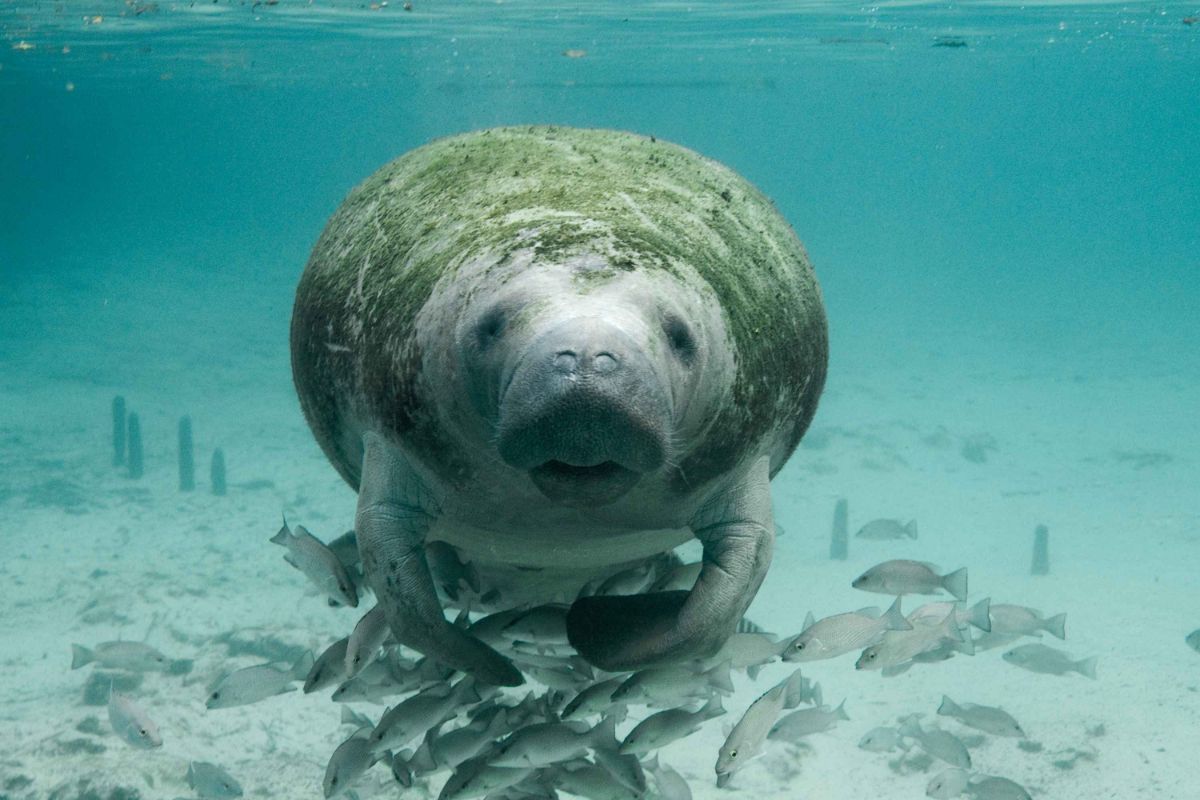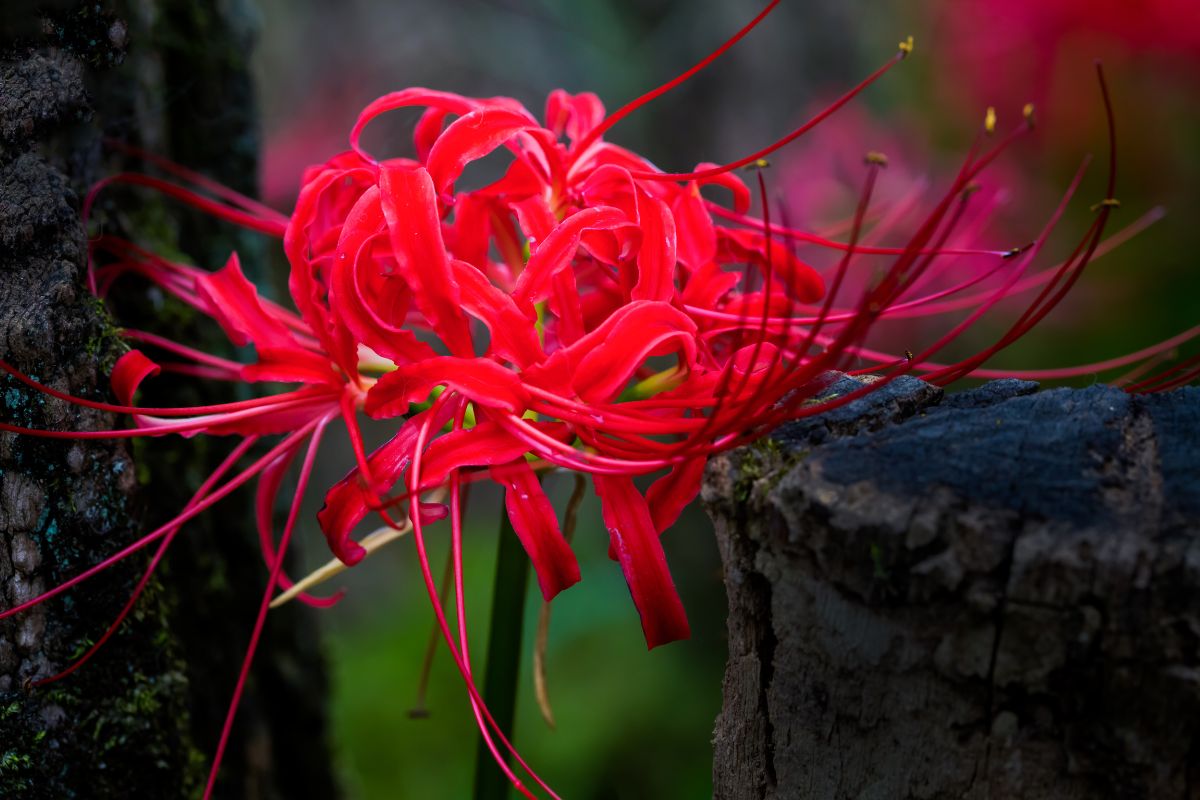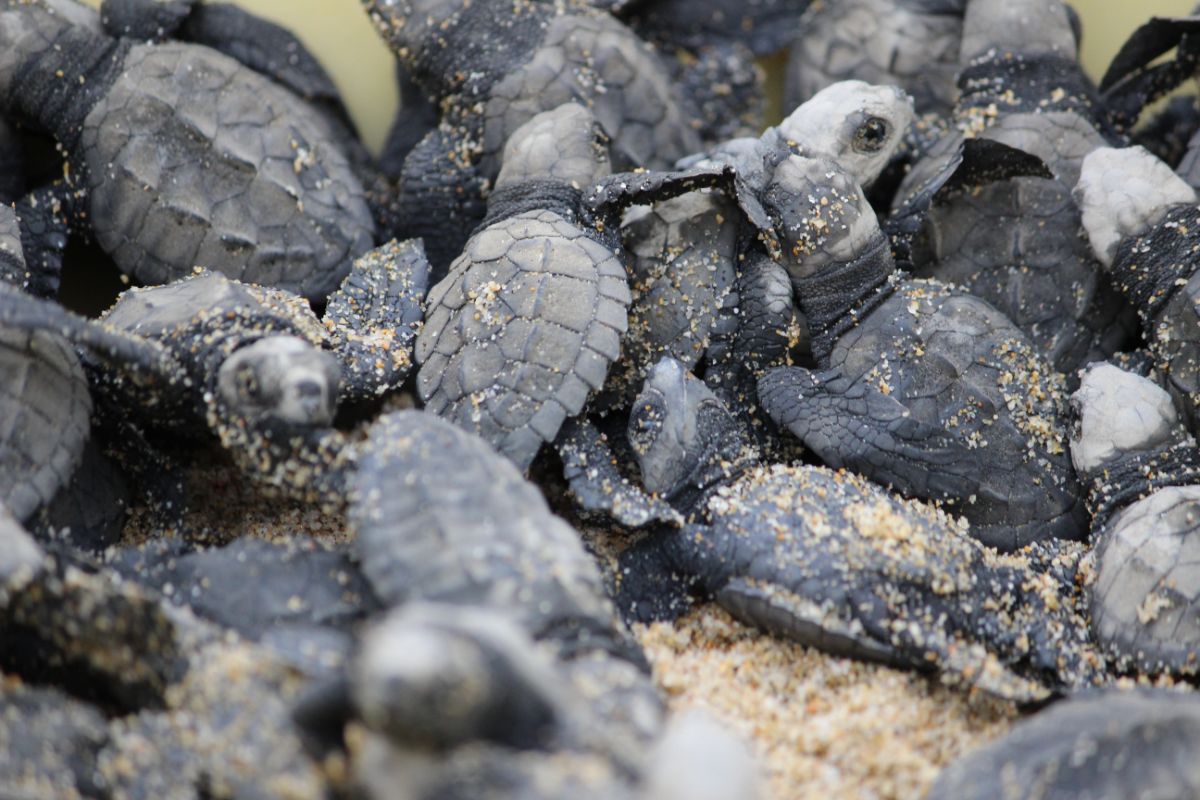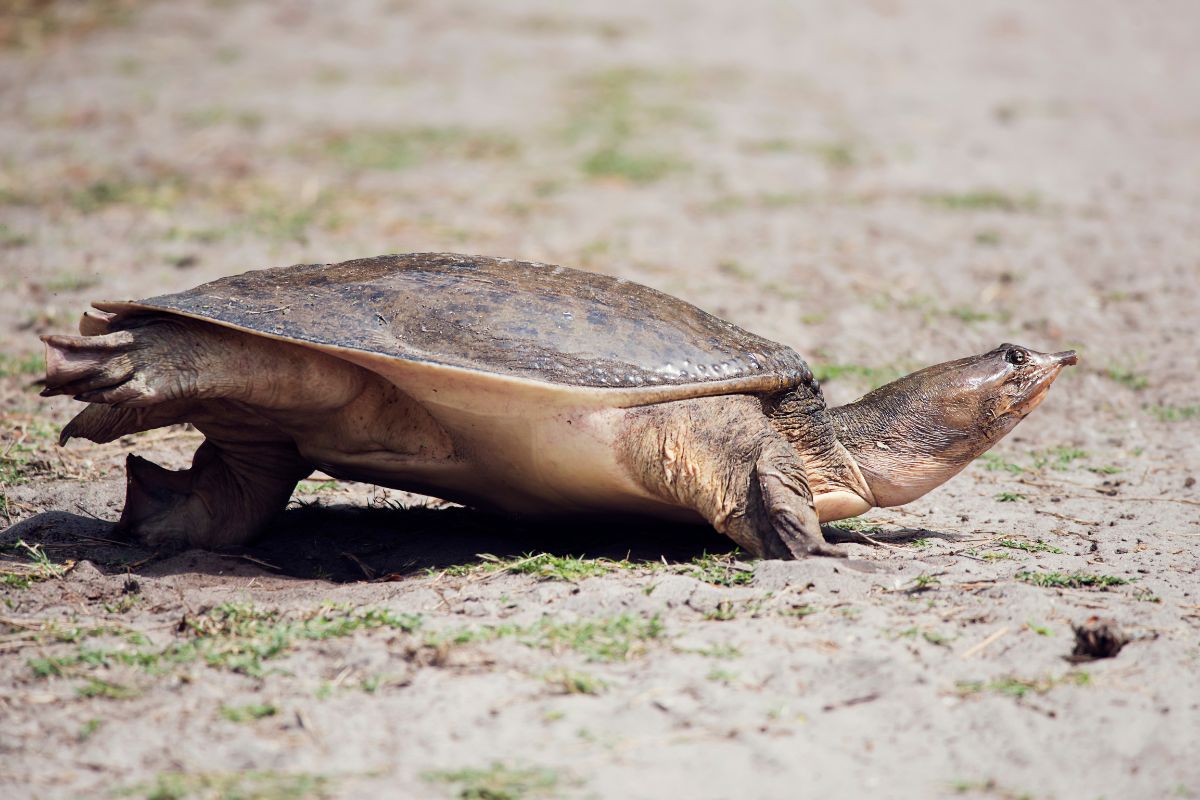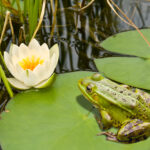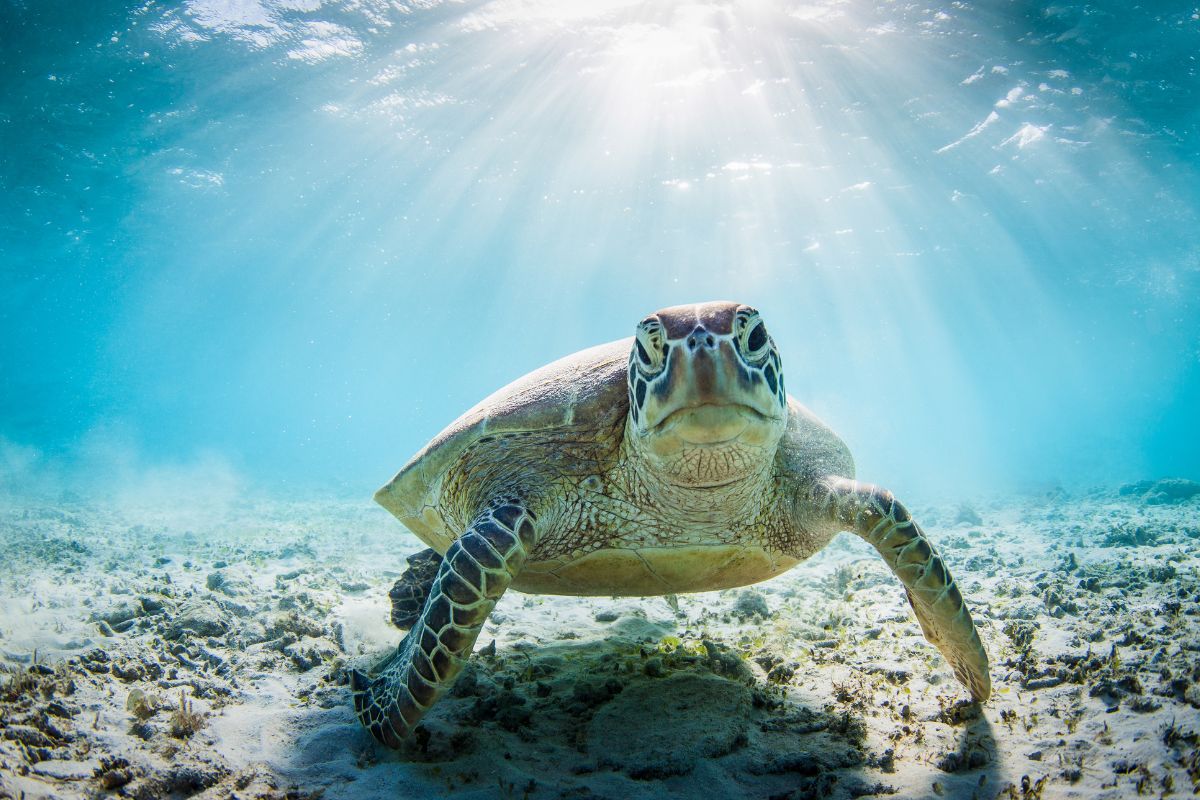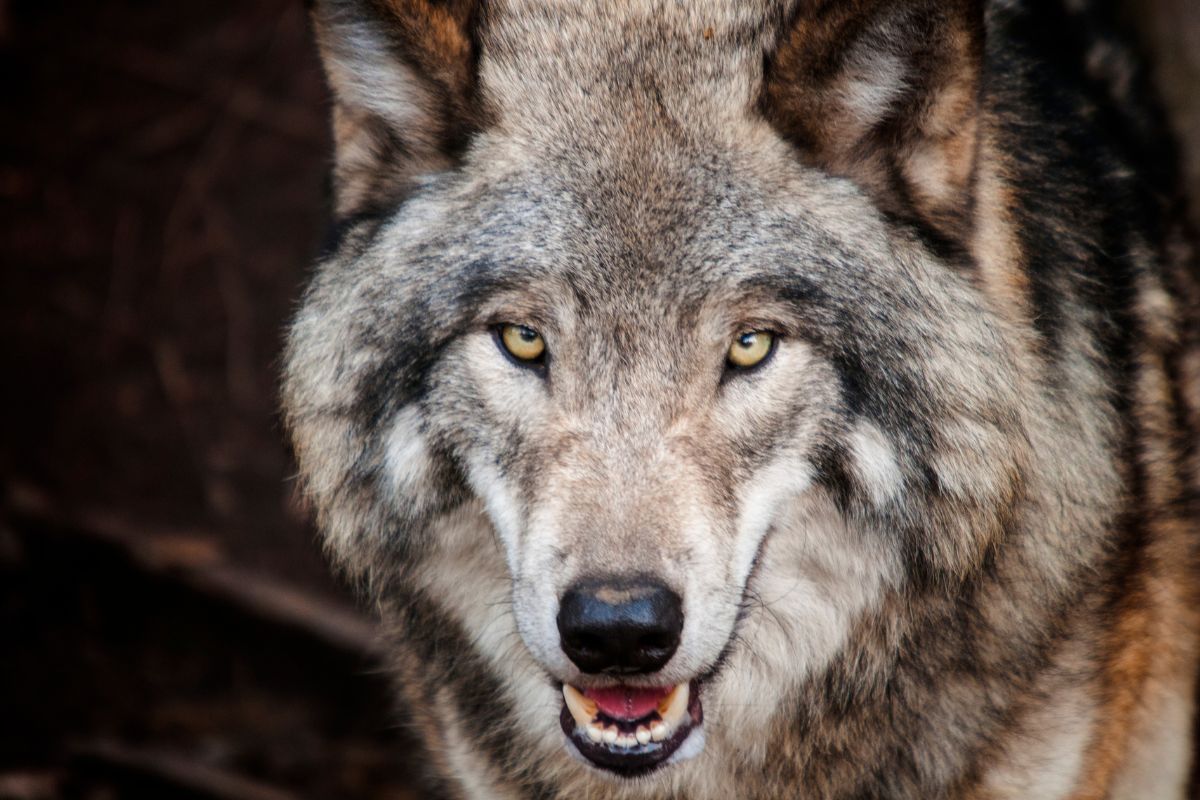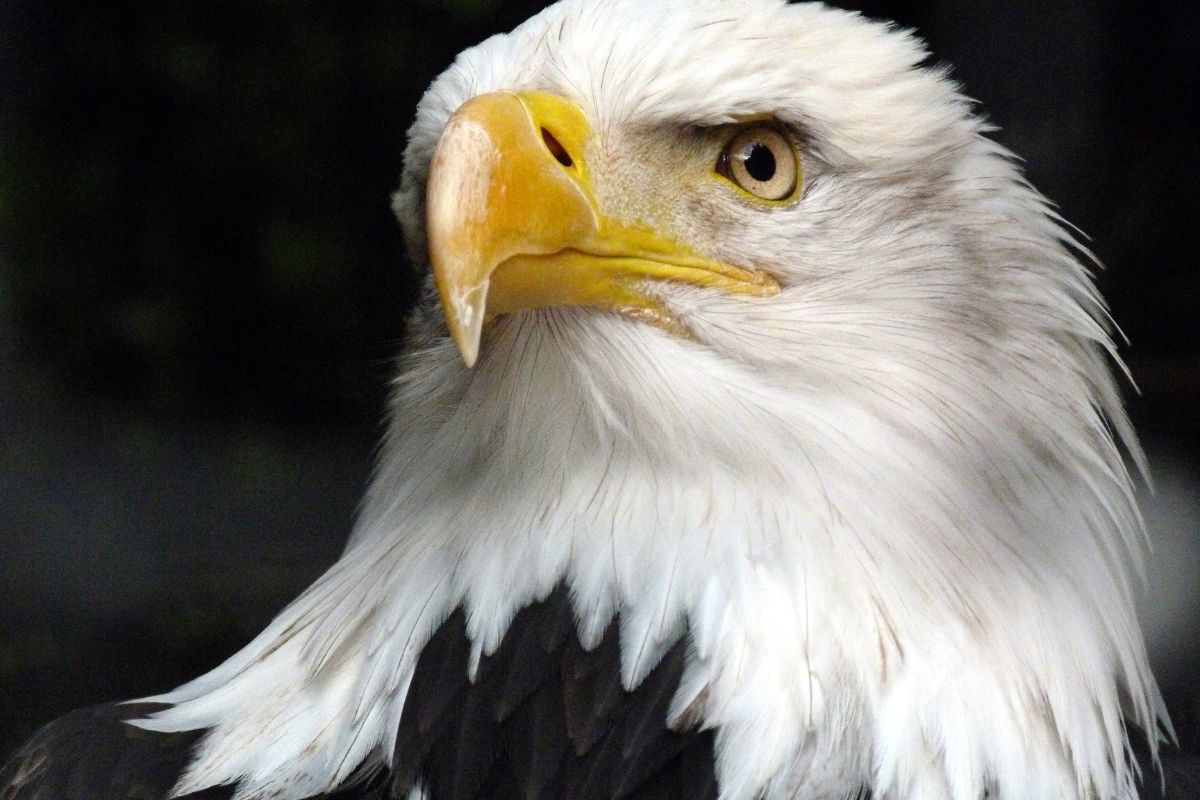Large, complex organisms such as manatees require the balance of ecosystems under the sea in order to survive and flourish.
When something upsets this balance it can cause great issues for their species.
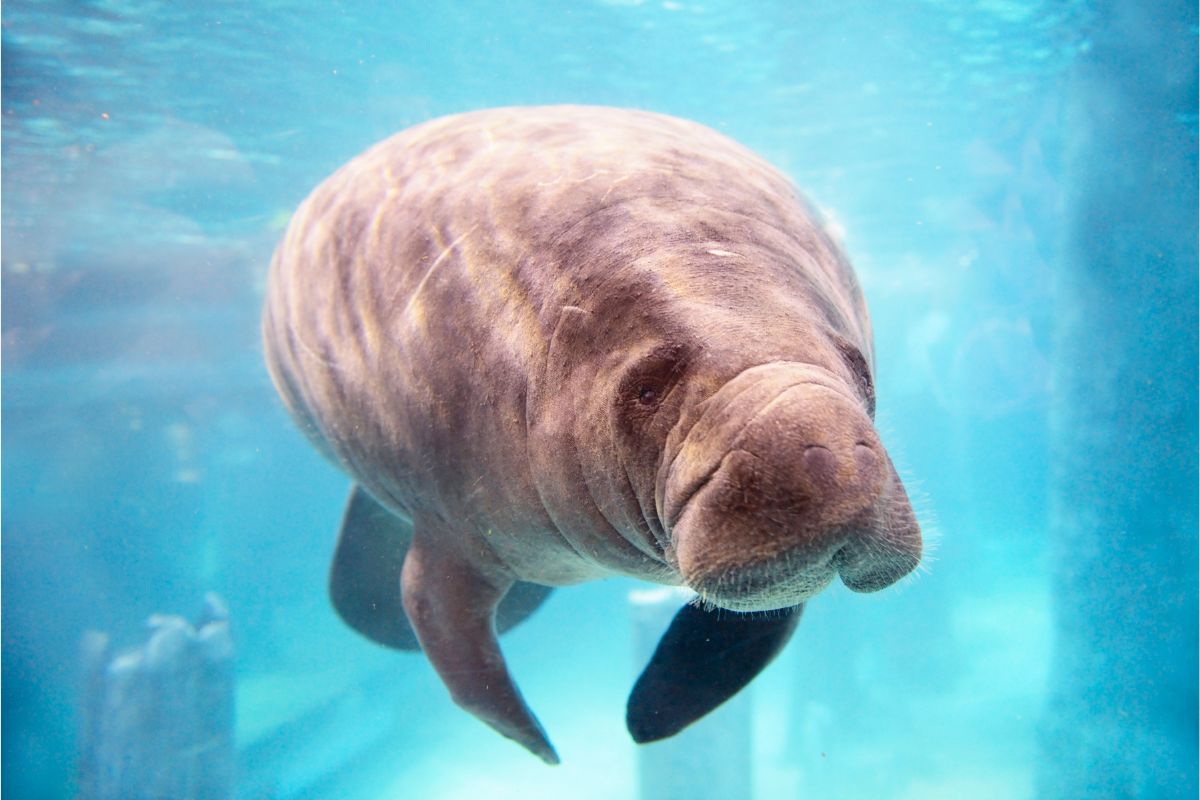
You may have heard of the Red Tide before, a harmful algal bloom that wreaks havoc on marine life. But what exactly is a red tide?
What does it mean and how does it work? More than this, how is it causing a lot of manatee deaths?
If you find yourself wondering these questions, you’ve come to the right place! In this article, we’re going to be explaining what red tide is, what causes it, and how it affects manatees.
What Is The Red Tide?
The red tide is the nonscientific term people use to describe an event involving the expansion of algae. The official name for this event is ‘Harmful Algal Bloom,’ or HAB.
Algae are simplistic plants that live in the sea or freshwater settings. When an algae colony grows out of control, this can cause many issues for all other kinds of living organisms.
To further understand this we need to understand a little more about algae and the toxins that they create. Algae is one of the fundamental food sources for a lot of living organisms in the ocean and in freshwater.
Generally, algal blooms are a good thing as it means there is a lot of food for smaller organisms, who then grow prosperous enough for predatory animals to eat without difficulty.
This circle of life allows an ecosystem to flourish.
However, not all algae are good for animals to eat, and a small amount of them produce harmful toxins that can be dangerous to consume.
Red tides are most commonly caused by a microorganism that has the Latin name Karenia brevis. The way that it kills a wide variety of sea life starts from the ground up.
Small animals become poisoned by the Karenia brevis, which are then in turn eaten by a larger animal and we get disease and toxins all the way up the chain.
So why then, is it often called ‘the red tide’? This is because the toxins created by the algae can turn the water red. As algal blooms flourish, they decrease the amount of oxygen in the water, which eventually turns the water red.
It’s a slightly concerning event that has long caused much superstition and problems for human communities that revolve around fishing and seafood.
Harmful algal blooms can actually cause a series of illnesses in humans that can be fatal if untreated.
What Are Manatees?

A manatee is a large and incredible aquatic mammal that is often given the amusing name ‘sea cow.’ Whilst this isn’t their official name, it is a good way of understanding what this animal is like.
They are herbivores and are fairly calm animals for their size, and spend a lot of their time grazing on huge quantities of underwater plants.
From this, we get our first indication as to why the red tide may affect them more than other aquatic animals.
You can find three distinct species of manatee, including the Amazonian, West African, and West Indian. Manatees exist in the waters of the North American East Coast, the Amazon River, and the west coast of Africa.
Manatees are generally much larger and heavier than humans, but are extremely dexterous swimmers, being able to swim up to 15 miles an hour if they have to.
Manatees are fairly vulnerable animals because of their usually slow swimming pace and size. Unfortunately, today they are seen as at-risk animals because of hunters who kill them to harvest their bones, hides, and oil.
Another reason why manatees are dying is because of their susceptibility to the red tide, which we will explore for you in the section below.
How Does The Red Tide Affect Manatees?
As we mentioned before, manatees are uniquely at risk as large animals because of their status as herbivores.
Karenia brevis causes a lot of different health issues for manatees and is suspected to be some of the largest causes of death in the Florida variant of the species.
There are a few ways that they can come into contact with the toxins created by harmful algae.
The first is through sea movement and toxins. As the sea churns and moves, it creates aerosol that toxins are present within. Manatees then breathe this in and get dosed with the harmful toxin.
Secondly is through the consumption of food. Since this alga infects a lot of different plants that manatees graze upon, they have a high chance of coming into contact with it and becoming sick.
Third and finally is just through ingesting sea water when swimming through an area of red tide.
Final Thoughts
Red Tide is dangerous for a lot of different species, but when it comes to manatees they are at particular risk.
Thankfully, there is a lot of work being done to quell the bad effects of red tides, and manatees in particular are a species that is being watched carefully by conservationists.
Whilst it is difficult to mitigate the damage that harmful algae blooms can do to animals like manatees, work is being done to minimize this and hopefully, in the future, we will have a better understanding of what we as custodians can do to help them.
We hope that this article has helped you to understand the importance of red tide and why it might affect manatees more than other species.
This is a natural phenomenon that we have only really just scratched the surface of, and if you’d like to know more there is a lot of research that has been done for you to read into.
Thanks for reading!
- What Do Squirrels Eat? Learn About Their Diet and Winter Survival - October 14, 2024
- What Do Raccoons Eat? Discover Their Diet and Eating Habits - October 6, 2024
- What do foxes eat? - October 5, 2024

